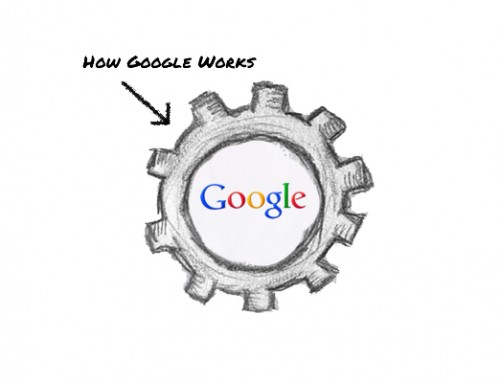 SEO is the Rodney Dangerfield of online marketing —it just can’t get no respect. (Did ya hear his voice in your head when you read that) Developers view SEOs with suspicious eyes at best, business owners think SEO is all about ranking and link building, and many SEOs don’t even know the basics. Case in point: all those offshore pitches detailing tactics that may have worked 2 years ago. And that’s being generous.
SEO is the Rodney Dangerfield of online marketing —it just can’t get no respect. (Did ya hear his voice in your head when you read that) Developers view SEOs with suspicious eyes at best, business owners think SEO is all about ranking and link building, and many SEOs don’t even know the basics. Case in point: all those offshore pitches detailing tactics that may have worked 2 years ago. And that’s being generous.
When I talk to lay –and even more experienced- people about SEO I usually begin by saying its part science and part art. Feel free to substitute left and right brain. Now, this thought process is certainly not a stretch: SEO is a merging of disciplines to ensure one’s Web site is optimally designed for users (there’s a reason I’m putting this first, as it has greater importance) and the search engines.
SEO as Part Science
Like any building or structure requires a strong foundation to ensure a long and steady life, any Web site needs to have the SEO fundamentals built in to ensure the highest level of optimization. Accordingly, with any new project the first step should be an audit of the Web site itself, from content architecture to canonical tags & content, 301 redirects to 404 page not found’s.
Not to be overly cute, but there are literally a ton of other considerations, depending on the nature of the site and its goals, that need to be addressed to ensure the site it is waterproof. The good news is that these considerations all follow a science based script of well-known best practices. Good points of reference include Google’s Official Blog and many other credible SEO blogs that are up to date on all search engine related happenings.
SEO as Part Art
If your refrigerator had every square inch covered by your grade school artwork chances are this is where you’ll thrive.
With all the fundamentals down the process shifts to the art side where creativity is key. Of course, inbound links to a Web site are an integral component to any SEOs work. The challenge lies in thinking outside the box to develop link baiting campaigns, liaise with bloggers, and drive quality traffic to your Web site. There are a number of angels to consider, but do remember people love free stuff, people love local, and people love sharing interesting things.
Social media. Love it or hate it it’s a huge signal that will continue to have more importance and tie in with the major search engines. Plus it’s a great way to develop more personal relationships with your audiences/customers. As the SEO professional it’s your job to embrace it! While it’s one thing to have a following of, say, 1,244 fans on Facebook and 598 Google +1’s it’s how your interact with and build a relationship with your followers that truly counts. Again, creativity is key especially if your Web site sells unsexy products. Plastic cups anybody?
Finally, content for content’s sake is great but it’ll provide little value. Rather, all site content should have an inherent value to your target visitor. Of course, research relevant keywords and use throughout including in the meta tags, title, etc.
We could go on and on with basic -and essential- SEO tactics, but that’s been done a million times before. That said, the next time someone asks you what SEO is, or if they need a bit of a lesson as to why it’s so important, try the part science and part art angle on for size.
Guest Post Author Bio:
Eric B. is the director of marketing and sales direction of Jersey City, NJ based Magnets.com and Customized Stickers. If you’re looking for strong ROI custom promotional magnets and stickers are the easiest, least expensive, and most fun way to grow your business and bottom line.
What do you think?
What do you think about Eric’s post? Agree? Disagree? Tell us below in the comments. I for one agree and that is why I like this post. As I grow the team here at ROI4my.com and I am investing in training people to do SEO I find it challenging at times to effectively communicate what I want to convey. The reason is because of the “art” aspect of SEO. No two situations are the same. No two pages are the same. No two sites are the same. So, if I say “for this site find keywords with search volume > 500 searches per month and < 8000” that may work fine for this client. This is a smaller site. But, if I was giving the same advice for Norwegian cruise lines I might say > 10,000 and < 50,000. You have to understand that part of the business to be effective and although it can be taught, I consider that the art part. Another example is Title and Meta Description writing. This my friends is pure art!
– Chris




FOLLOW US